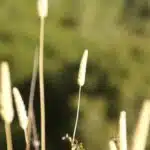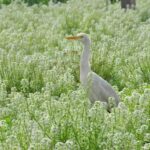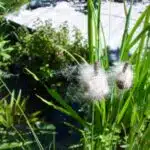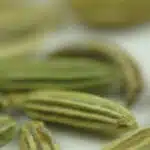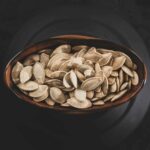Growing flowers from seed is an excellent way to add color and beauty to any garden. However, it can be a challenging task for those who are new to gardening or lack experience. For those who want to learn how to grow any flower from seed, there are several steps that must be followed.
Firstly, it is important to select the right seeds for your garden. This involves considering factors such as soil type, climate, and the amount of sunlight your garden receives. Once you have chosen the right seeds, it is essential to prepare the soil properly and create the ideal growing conditions for your plants. With careful planning and attention to detail, anyone can successfully grow beautiful flowers from seed and enjoy a stunning garden display all year round.
Understanding Your Garden’s Soil Type
To successfully grow any flower, it is essential to understand the soil type in your garden. Soil type plays a critical role in the growth and development of plants. Compost usage is an effective way to improve soil quality. Composting involves combining organic materials such as leaves, grass clippings, and vegetable scraps to create nutrient-rich humus that can be used as a natural fertilizer for your garden. When added to your soil, compost enhances soil structure and increases water-holding capacity, thus providing a hospitable environment for plant growth.
Another vital aspect of understanding soil type is knowing the pH balance of your garden. Soil pH determines how well plants absorb nutrients from the soil. A pH level that’s too high or too low can negatively affect plant growth, leading to stunted or unhealthy plants. It’s crucial to test your garden’s pH regularly, especially when starting a new garden bed or planting new flowers. If you find that your soil’s pH is not within the ideal range for your chosen flowers, you may need to adjust it using lime or sulfur.
In summary, understanding your garden’s soil type is crucial for successful flower growth. Incorporating compost into your soil can improve its quality by enhancing its structure and water retention capabilities. Additionally, monitoring and adjusting the pH balance of your garden ensures that plants can efficiently absorb nutrients from the soil for optimal growth and health. The next step in growing flowers from seed involves assessing the climate for optimal growth conditions.
Assessing The Climate For Optimal Growth
The success of growing flowers from seeds largely depends on the environmental conditions in your garden. Before planting, it is essential to assess soil, water, and air quality to ensure that your flower seeds have the best possible chance of thriving. Start by testing the pH level of your soil; most flowers require a pH between 6.0 and 7.5. If your soil is too acidic or alkaline, you may need to make adjustments with lime or sulfur.
In addition to assessing soil quality, it’s also important to evaluate the availability of water in your garden. Flowers need adequate moisture to grow properly; however, overwatering can be just as harmful as under-watering. A common mistake is not allowing enough time for soil to dry out between watering sessions which can lead to root rot and other fungal diseases. Therefore, it’s essential to create an irrigation plan that works for your specific type of flower seed and garden layout.
Identifying and mitigating environmental stressors are crucial components of optimal growth. Environmental stressors can come in many forms including pests, disease, harsh weather conditions such as strong wind or direct sunlight exposure which can cause dehydration and sunburn injury. To mitigate these stressors consider using organic pest control methods or shade cloth during hot summer months when temperatures are highest. By understanding how these factors affect plant growth and taking necessary precautions, you can ensure a healthy garden environment that will support successful flower seed germination.
Transition sentence: Now that we have evaluated environmental factors necessary for optimal growth let’s move on to choosing the right flower seeds for your garden.
Choosing The Right Flower Seeds
Assessing the climate for optimal growth is a crucial step in growing any flower from seed. However, it is equally important to choose the right flower seeds for your garden. The success of your garden depends on the quality of seeds you select, so it is essential to know the seed selection criteria.
Seed selection criteria:
- Choose seeds that are well-suited for your climate and soil type.
- Look for seeds that are disease-resistant and have high germination rates.
- Consider purchasing organic or heirloom varieties for a more sustainable garden.
When it comes to sourcing flower seeds, there are many options available. However, not all seed sources are created equal. It is essential to choose reputable and trustworthy sources to ensure that you get high-quality seeds.
Best Seed Sources:
- Local nurseries and garden centers often carry regionally adapted varieties.
- Online retailers specializing in heirloom and organic seeds offer a wide variety of options.
- Seed exchanges with other gardeners can be a cost-effective way to obtain unique varieties.
Considering the amount of sunlight your garden receives is another important factor when choosing flower seeds. Different flowers have varying light requirements, so selecting appropriate species will help ensure successful growth and blooming in your garden. By choosing the right flower seeds based on these considerations, you can set your garden up for success from the very beginning.
Considering The Amount Of Sunlight Your Garden Receives
Did you know that the amount of sunlight your garden receives influences how well flowers grow from seeds? Sunlight exposure plays a critical role in determining whether flower seeds will germinate and develop into healthy plants. Therefore, it is essential to assess your garden’s sunlight levels before planting any flowers from seed.
To start, check the sun exposure in your garden by observing how many hours of direct sunlight reach the area where you plan to plant. Most flowering plants require at least six hours of full sun to thrive. If you notice that certain areas receive less sunlight, consider planting shade-tolerant flowers such as impatiens or begonias, which need only partial sun exposure.
Planting depth also depends on sunlight exposure. For instance, if you live in a hot and dry region, it is advisable to plant seeds deeper than usual to protect them from scorching heat. On the other hand, if you live in a cooler climate with less sunshine, shallow planting is recommended since deep planting may inhibit germination due to lack of sufficient warmth. Additionally, watering frequency is vital for optimal growth and development of seedlings in relation to sun exposure levels. Plants receiving direct sunlight require more watering than those planted in shadier areas since they tend to lose more moisture through evaporation.
Considering the amount of sunlight your garden receives is crucial when deciding what type of flower seeds to plant. In the next section, we will discuss selecting seeds based on your gardening experience and preferences.
Selecting Seeds Based On Your Gardening Experience
- When selecting seeds for a garden, it is important to consider the gardener’s experience level and the size of the garden.
- For novice gardeners, it is beneficial to start with larger seeds such as beans or corn, as these are easier to manage than smaller seeds such as petunias or pansies.
- Experienced gardeners may wish to challenge themselves by attempting to grow flowers from seed.
- To be successful, it is essential to research the specific needs of each flower species before selecting and sowing the seeds.
Choosing Seeds
When choosing seeds for growing flowers, it is essential to consider several factors that will ultimately affect the success of your garden. One crucial factor is seed storage, as the quality of seeds can deteriorate over time if not stored in proper conditions. Ensure that you purchase fresh seeds from reputable sources and store them in a cool, dry place until planting time.
Another important consideration when selecting flower seeds is their germination rates. Germination rates refer to the percentage of seeds that successfully grow and produce healthy plants. It is recommended to choose seeds with high germination rates to increase the likelihood of a successful garden. Some seed packets may even provide information on the expected germination rate so that you can make an informed decision.
Lastly, it is important to understand the difference between hybrid and heirloom seeds when selecting flower seeds. Hybrid seeds are created by crossbreeding two different plant varieties to create a new variety with specific traits. In contrast, heirloom seeds are passed down from generation to generation without any crossbreeding, resulting in unique characteristics and often a stronger flavor profile. Consider which type of seed aligns with your gardening goals and preferences before making a purchase.
Gardening Experience
As a horticulture expert or garden consultant, it is essential to consider the experience level of a gardener when selecting flower seeds. Novice gardeners may prefer to start with easy-to-grow flowers such as marigolds, zinnias or petunias, while experienced gardeners may be more inclined towards challenging varieties such as orchids or exotic lilies. Additionally, one must consider the type of gardening method being used, such as container gardening or raised beds. Container gardening requires plants that are compact and do not require extensive root systems, while raised beds allow for larger plants that can spread out.
For those new to gardening, it is recommended to select flower seeds that are easy to grow and maintain. Marigold seeds are ideal for novice gardeners as they have a high germination rate and can tolerate various soil conditions. Other beginner-friendly options include sunflowers and pansies which can also be grown in containers or raised beds. However, experienced gardeners can experiment with more challenging varieties such as rare orchids or exotic roses.
Lastly, it is important to keep in mind that some flowers require specific growing conditions that may not be suitable for all types of gardens. For example, some species thrive in full sun exposure while others require partial shade. It is crucial to research the requirements of each flower seed before making a purchase to ensure optimal growth and blooming results. By taking into account both gardening experience and growing conditions, gardeners can make informed decisions when selecting flower seeds for their gardens.
Preparing The Soil For Planting
To grow any flower from seed, it is crucial to prepare the soil properly. Soil preparation is essential for providing optimal growing conditions that will help the seeds germinate and thrive. The first step in preparing the soil is testing it for nutrients and pH levels. You can either use a home testing kit or send a sample of your soil to a professional laboratory for analysis.
Once you have determined the nutrient and pH levels of your soil, you can add fertilizer to improve its quality. Adding fertilizer will provide essential nutrients like nitrogen, phosphorus, and potassium which are necessary for healthy plant growth. The type and amount of fertilizer will depend on the nutrient levels of your soil, so be sure to follow instructions carefully.
In summary, preparing the soil for planting plays an integral role in growing any flower from seed. Testing your soil for nutrient and pH levels is essential before adding fertilizer to improve its quality. By taking the time to prepare your soil correctly, you are creating ideal growing conditions that will help your seeds germinate and grow into healthy plants with beautiful blooms. In the next section, we will discuss how to create these ideal growing conditions without using artificial means.
Creating The Ideal Growing Conditions
To successfully grow any flower from seed, it is essential to provide the ideal growing conditions. One option for indoor gardening is utilizing hydroponic systems, which allow for precise control over temperature, light, and nutrients. Hydroponics also eliminate the need for soil, reducing the risk of pests and diseases.
To create the ideal growing conditions for your flowers, start by selecting an appropriate location. Avoid areas with extreme temperatures or drafts that could harm your plants. Next, consider using grow lights to ensure your flowers receive adequate light even in low-light areas of your home.
Another crucial factor in creating ideal growing conditions is ensuring proper humidity levels. Most flowers require a relative humidity level between 40-60%. You can maintain this level by using a humidifier or placing a tray of water near your plants.
- Optimal Temperature
- Controlled Light
- Appropriate Humidity Levels
- Consistent Nutrient Supply
Providing the ideal growing conditions for your flowers may seem overwhelming at first. Still, with some research and practice, you can create an environment where they will thrive. In the next section, we will discuss the importance of understanding proper watering techniques to ensure your flowering plant’s longevity and health.
Understanding The Importance Of Watering
One objection to watering is that it may seem like a tedious and time-consuming task. However, it is essential for the growth and health of your plants. Understanding the importance of watering involves knowing the frequency and amount of water needed by your chosen flower. The frequency of watering varies depending on the type of plant, soil composition, temperature, and humidity levels.
To determine when to water your plant, check the top inch of soil. If it feels dry, then it’s time to water. Provide enough water until you see it come out of the drainage holes at the bottom of your container. Make sure not to overwater as this can lead to root rot and other problems. Watering tools such as watering cans, hoses with nozzles or drip irrigation systems can be used for effective watering.
Watering techniques are also important in ensuring that your plants receive proper hydration. One technique is deep watering where you apply water slowly but deeply so that it reaches the roots. This encourages stronger root growth and drought resistance in plants. Another technique is surface watering where you apply small amounts of water frequently on topsoil. This method is suitable for shallow-rooted flowers.
Providing adequate moisture for your flowers through proper watering techniques helps them grow healthy and strong. However, just like humans need proper nutrition to thrive, so do plants require nutrients for optimal growth. In the next section, we will delve into how to provide proper nutrition for your plants without overfeeding them.
Providing Proper Nutrition For Your Plants
Growing flowers from seeds can be an exciting and rewarding experience, but it is crucial to provide them with proper nutrition for optimal growth. Providing your plants with the right nutrients will ensure they grow strong and healthy, resulting in beautiful blooms. In this section, we will discuss the importance of composting benefits and organic fertilizers in providing your plants with the essential nutrients they need.
Composting benefits both the environment and your garden by recycling organic waste into nutrient-rich soil. By adding compost to your soil, you are providing your plants with a variety of important nutrients such as nitrogen, phosphorus, and potassium. Additionally, compost helps improve soil structure by increasing its ability to retain water and reducing erosion. This creates a healthy environment for plant roots to grow deep and strong.
Organic fertilizers are another excellent way of providing your plants with essential nutrients. Unlike synthetic fertilizers, organic fertilizers work gradually and release nutrients over time, ensuring that your plants receive a steady supply of nutrients without causing harm to the environment. Organic fertilizers also help promote beneficial microorganisms in the soil that assist with breaking down organic matter and releasing nutrients into the soil.
By incorporating composting benefits and organic fertilizers into your gardening routine, you are taking steps towards creating a sustainable ecosystem for your plants to thrive in. With proper nutrition, you can be sure that your plants will grow healthy and strong while producing beautiful blooms for you to enjoy. In our next section on preventing disease and pests, we will discuss how to maintain this healthy environment by avoiding common problems that can harm your plants.
Preventing Disease And Pests
Providing proper nutrition for your plants is essential to their growth and development, but it’s not the only factor that contributes to a healthy garden. In fact, according to recent studies, up to 80% of plant diseases are caused by environmental factors such as weather, soil conditions, and pests. This means that preventing disease and pests is just as important as providing proper nutrition for your plants.
One way to prevent diseases and pests from damaging your garden is by using natural remedies. Many common household items such as garlic, vinegar, and baking soda can be used to create effective pest repellents and fungicides. For example, mixing one part vinegar with three parts water makes a great all-purpose cleaner for killing mold and mildew on plant leaves. Similarly, crushing garlic cloves into a solution of water and soap creates an effective pesticide that repels aphids, whiteflies, and other common garden pests.
While natural remedies can be effective in combating pests and diseases in your garden, sometimes chemical pesticides are necessary. However, it’s important to use these products sparingly and with caution since they can harm beneficial insects like bees and butterflies. Always follow the instructions carefully when applying chemical pesticides, wear protective clothing including gloves and goggles, and avoid using them during windy or rainy weather.
When it comes to caring for seedlings, prevention is key. Start by planting seeds in high-quality soil that has been amended with compost or other organic matter. Keep the soil moist but not saturated until the seedlings have established themselves. Finally, protect young seedlings from pests like slugs or snails by creating barriers around them with copper tape or diatomaceous earth pellets. By following these steps you’ll be well on your way to growing beautiful flowers from seed!
Caring For Seedlings
After successfully germinating your seeds, the next step is to care for the seedlings properly. One of the most critical factors in this process is watering frequency. Seedlings require moist soil at all times, but overwatering can lead to root rot and other plant diseases. It’s best to water them deeply once a week rather than shallowly every day.
Another crucial aspect of caring for seedlings is pruning techniques. Pinching off the top set of leaves or cutting off the tips of each stem can help promote bushy growth and prevent legginess. However, it’s essential to wait until the seedlings have developed their first true leaves before starting any pruning.
In addition to watering and pruning, light is also an important element in proper seedling care. Place them in a sunny window or under grow lights for 14-16 hours per day. If your seedlings are stretching towards the light source too much, consider moving them closer or using reflective material around them.
- Use a moisture meter to ensure that you’re not overwatering or underwatering.
- Rotate the seed trays regularly so that all sides receive equal amounts of light.
- Avoid fertilizing until the plants have been transplanted into their permanent location.
The next step after caring for your seedlings is transplanting them into your garden beds. But before we get into that, let’s take a closer look at some common mistakes people make when transplanting and how to avoid them.
Transplanting Seedlings Into The Garden
You’ve successfully germinated your flower seeds and now it’s time to transplant them into the garden. However, it is important to note that young seedlings are delicate and require proper care during the transplantation process. Before transplanting, you should first harden off your seedlings by gradually exposing them to outdoor conditions. This will help prevent transplant shock and allow for a smoother transition.
The timing of your transplant is also crucial. It’s best to wait until after the last frost date in your area before moving your seedlings outdoors. Additionally, ensure that the soil temperature is warm enough for your particular flower species. A good rule of thumb is to wait until the soil has reached a consistent temperature of at least 60°F (15°C) before transplanting.
When it comes time to transplant, be sure to dig a hole deep enough for the root system of each seedling and space them accordingly based on their mature size. Gently remove each seedling from its container and place it in the hole, making sure that the soil level of the garden matches that of the container. Water thoroughly after planting and monitor closely for any signs of stress or disease as your new flowers adjust to their new environment.
As you watch your newly transplanted flowers grow, it’s important to maintain their health through proper watering, fertilization, and pest management techniques. In order to ensure ongoing success with your flower garden, pay attention to any changes in growth patterns or coloration and address issues promptly as needed. With patience and care, you can watch as your once tiny seedlings transform into beautiful blooming plants that bring joy and beauty to both yourself and those around you.
Maintaining Your Flower Garden
Now that you have successfully grown your flowers from seed, it’s important to maintain their growth and keep them healthy. Proper maintenance will help ensure a long-lasting and beautiful flower garden. Here are some tips for maintaining your flower garden:
- Watering: Flowers require consistent and adequate watering. Water your plants deeply once or twice a week rather than frequent shallow watering. Avoid getting water on the leaves as this can cause fungal disease.
- Fertilizing: Use a balanced fertilizer every four to six weeks during the growing season to promote healthy growth and blooming.
- Companion planting: Certain plants complement each other when planted together, which can lead to healthier flowers. For example, marigolds repel harmful insects while attracting beneficial ones, making them an excellent companion plant for many flowers.
Seasonal maintenance is also essential for keeping your flower garden healthy:
- Pruning: Remove dead or damaged foliage regularly to prevent decay or disease from spreading.
- Mulching: Apply organic mulch around the base of your flowers to retain moisture and suppress weeds.
By following these guidelines, you can help maintain the health of your flower garden throughout the season. In the next section, we will discuss how to harvest seeds for future planting without compromising quality or quantity.
Harvesting Seeds For Future Planting
- Collecting seeds from existing plants is a cost-effective way to add new plants to the garden.
- It is important to collect the seeds at the right time of the year for each species, as many species have different ripening times.
- To ensure successful seed storage, it is important to dry the seeds and keep them in an airtight, dark container in a cool and dry environment.
- To clean the collected seeds, it is recommended to remove any attached debris or impurities, as these can affect the probability of successful germination.
- To increase the chances of successful germination, some seeds may require stratification or scarification before planting.
- Lastly, it is important to note that some plants produce seeds that have a short lifespan and may not be suitable for long-term storage.
Collecting
When it comes to growing flowers from seed, collecting the right seeds is crucial for a successful outcome. Proper seed collection techniques involve selecting healthy plants with desirable traits and allowing them to mature fully before harvesting. It’s important to choose seeds from plants that have not been hybridized or genetically modified, as these can produce unpredictable offspring.
Once you’ve collected your seeds, proper storage is key to ensuring their viability for future planting. Seeds should be stored in a cool, dry place away from light and moisture. Some gardeners prefer to store seeds in airtight containers or jars with desiccant packets to absorb any excess moisture. Labeling your seeds with the plant variety and date of collection can also be helpful for keeping track of their age and viability.
By mastering proper seed collection techniques and storage methods, any gardener can grow beautiful flowers from seed. Whether you’re starting a new garden or looking to expand an existing one, collecting and storing high-quality seeds is an essential part of the process that will set you up for success in the seasons ahead.
Storing
Proper seed storage is crucial for maintaining the long-term viability of seeds. After harvesting seeds, it’s important to ensure they are stored in optimal conditions to preserve their quality for future planting. Proper seed storage involves protecting the seeds from moisture, light, and heat, which can all impact the viability of the seeds.
When storing seeds, it’s best to keep them in a cool and dry place. Airtight containers or jars with desiccant packets can be used to absorb any excess moisture that could harm the seeds. The ideal temperature for storing most flower seeds is around 40°F (4°C). If stored properly, some flower seeds can remain viable for up to five years or longer.
Labeling your seed containers with important information such as plant variety and date of collection is also essential. It’s recommended to use good quality labels that will not smudge or fade over time. Properly labeling your seed containers will allow you to keep track of the age and viability of each batch of seeds, making it easier to plan future plantings. By following these proper seed storage techniques, you’ll be able to preserve your harvested flower seeds for years to come.
Cleaning
Now that you’ve harvested your flower seeds and learned about proper seed storage techniques, it’s important to also discuss cleaning tips. Cleaning your seeds before storing them can help reduce the risk of fungal or bacterial infections and improve their viability for future planting.
One important step in cleaning your seeds is removing any debris or chaff that may be present. This can be done by gently rubbing the seeds between your fingers or using a fine mesh sieve to sift out any unwanted materials. It’s important to handle the seeds with care during this process to avoid damaging them.
Another useful cleaning tip is to soak the seeds in water overnight. This can help remove any remaining debris and also stimulate germination rates. After soaking, be sure to dry the seeds thoroughly before storing them using the proper seed storage techniques discussed earlier. By implementing these cleaning tips into your seed harvesting process, you’ll be able to ensure that your flower seeds are in optimal condition for future planting.
Enjoying The Beauty Of Your Flower Garden
The beauty of a flower garden is unparalleled, truly a feast for the eyes. As you watch your flowers grow and blossom, it’s hard not to feel a sense of awe and wonder at the intricate patterns and vibrant colors that nature has provided. But your garden isn’t just a pretty sight; it’s also a place where you can create stunning arrangements to decorate your home or office. With the right tools and techniques, you can craft beautiful bouquets that will bring joy to everyone who sees them.
One of the most rewarding aspects of growing a flower garden is attracting pollinators like bees and butterflies. These creatures are essential for plant reproduction, and by providing them with nectar-rich flowers, you’re doing your part to support the ecosystem around you. Not only that, but watching these delicate winged creatures flit from bloom to bloom is an experience in itself. You’ll be amazed at how much life your garden attracts once it’s in full bloom.
Creating arrangements and attracting pollinators are just two of the many benefits of growing your own flower garden. Whether you’re an experienced gardener or just starting out, there’s something magical about watching tiny seeds transform into towering plants bursting with color and life. So don’t be afraid to get your hands dirty – with a bit of patience and care, you’ll have a beautiful garden that will bring joy to yourself and others for years to come.
Conclusion
Growing flowers from seeds can be a rewarding and fulfilling experience for any gardener. It requires careful planning and attention to detail, but with the right knowledge and tools, anyone can create a beautiful flower garden from scratch. Understanding your soil type, assessing the climate, choosing the right seeds, considering sunlight exposure, and transplanting seedlings are all essential steps in growing healthy flowers.
Once your flowers have been planted, it’s important to maintain them properly. This includes watering them regularly, removing weeds, controlling pests and diseases, and fertilizing as needed. By following these simple guidelines, you can enjoy a gorgeous flower garden that will bring joy and beauty to your life.
Interestingly, according to a recent survey by the National Gardening Association, over 80% of American households participate in some form of gardening each year. This shows that growing plants is not only an enjoyable activity but also a popular one. With this kind of interest in gardening, there’s no doubt that more people will be inspired to grow their own flowers from seed. By following the tips outlined above and staying committed to their gardens’ care and maintenance over time, they too can create stunning flower beds that will last for years to come.
Image Credits
- “dwarf reed mace seed release context view” by dchallender (featured)


